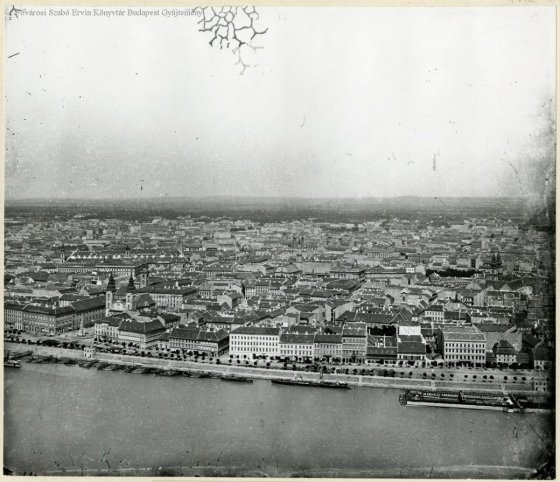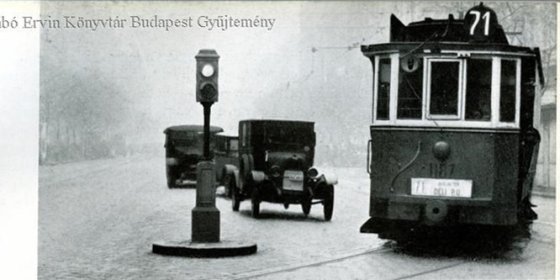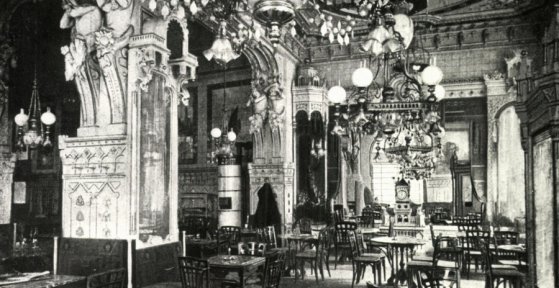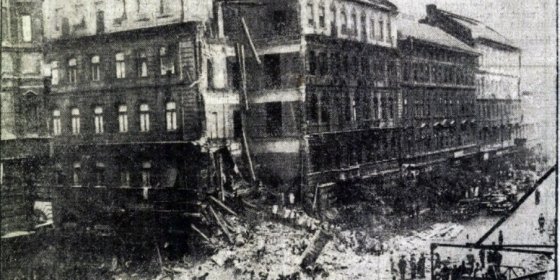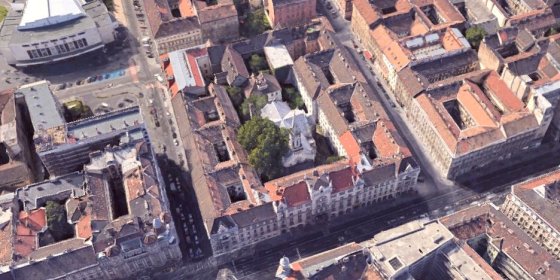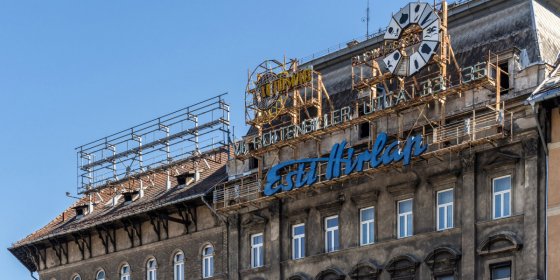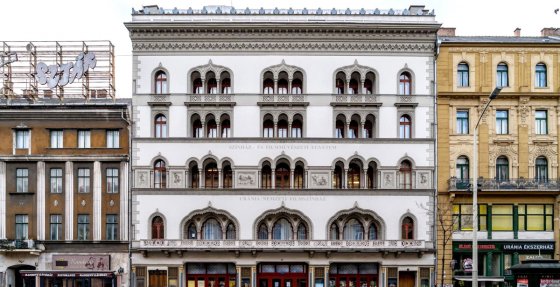 The „intertwined history” of the bridges and the city of Budapest
Which ideas and events have shaped the fate of bridges of Budapest and the cityscape? Alongside many other interesting facts, this question is also answered this newly published book by the Budapest City Archives, which introduces the history of bridges in Budapest.
The „intertwined history” of the bridges and the city of Budapest
Which ideas and events have shaped the fate of bridges of Budapest and the cityscape? Alongside many other interesting facts, this question is also answered this newly published book by the Budapest City Archives, which introduces the history of bridges in Budapest.
Rákóczi Road
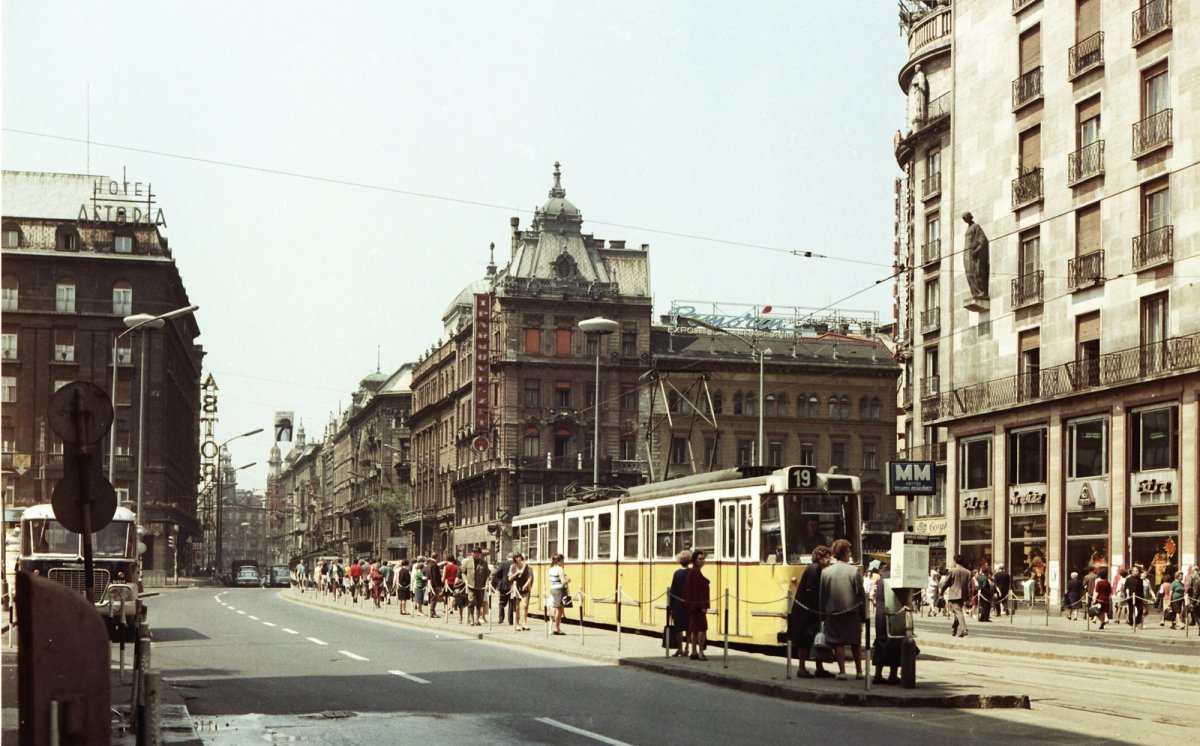 The last tram passed through Rákóczi Road and Erzsébet Bridge 50 years ago
The last tram passed through Rákóczi Road and Erzsébet Bridge 50 years ago
December 30, 2022 at 6:00 PM
Tram traffic started on Rákóczi Road already 125 years ago, and there was a time when five different lines passed through here. But the means of transport, which is very popular with the travelling public, was gradually pushed out of the inner city districts. The last tram passed through Rákóczi Road and Erzsébet Bridge 50 years ago, on 31 December 1972, and its journey ended at Móricz Zsigmond Square. The demolition of the tracks soon began. In recent years, it has been brought up more and more often that the tram should be brought back to this route.
A plan made 150 years ago for the development of Pest - A special drawing of the Eskü Square Bridge
June 5, 2022 at 9:30 AM
150 years ago, there was no unified Budapest, but there was already a unified plan for the development of the future capital.
Water intrusion into the metro tunnel: the builders feared that the houses on Rákóczi Road would be endangered
January 11, 2022 at 1:00 PM
Between Astoria and Blaha Lujza Square, in the metro tunnel under construction, but on the already drilled section, a water intrusion took place in 1967, which shocked the people of Budapest and raised questions about the possible safety of the metro. The unexpected sand and water intrusion 55 years ago not only caused alarm among prospective passengers, but also experts feared that the residential buildings on Rákóczi Road could be endangered. After averting the danger, the builders tried to reassure the people of the capital that there would be no need to fear similar accidents in the finished metro tunnel.
Traffic lights have been with us for 95 years - The first traffic light was installed on Blaha Lujza Square
December 27, 2021 at 12:00 PM
Nowadays, we take it for granted that traffic lights are included in the cityscape. They switch automatically, or pedestrians may have to press a button to cross. The predecessor of today's traffic lights were still manually operated, and the first one appeared at the corner of the Outer Ring Road and Rákóczi Road 95 years ago.
At the turn of the century, Balaton Café was the center of social life, today it is for university students
November 18, 2021 at 11:30 AM
One of the exclusive cafés at the turn of the century was the Balaton Café [Kávéház in Hungarian], opened in 1894 on the corner of Rákóczi Road and Szentkirályi Street. The owner set himself no less a goal than to compete with the New York Café that opened at the same time. The café became the haunt of well-known politicians, famous actors, renowned writers, but its lavish interiors can unfortunately only be known from photographs today. Recently, university students took possession of the Szentkirályi Street wing, but there is nothing reminiscent of the luxurious past in the newly established examination center.
The residential house on Rákóczi Road still stands today, the corner of which collapsed 85 years ago
July 25, 2021 at 9:00 AM
A collapsing house in Budapest in 1936 could have caused a huge tragedy. In vain did the residents signal to the owners that the walls were cracking, they did not feel safe, no substantive action was taken. The corner of the house at 73 Rákóczi Road collapsed on 23 July 1936, a few minutes before 3 pm.
Slovak Lutheran Church to become cultural centre
June 28, 2021 at 5:00 PM
The former Slovak Lutheran church in Pest, No. 57 Rákóczi Road, is being renovated and transformed into the cultural and community centre of Slovaks in Hungary. The Hungarian and Slovak Governments are supporting the multi-phase works – the parties signed an agreement today.
Neons lost – Many billboards on Rákóczi Road are reminiscent of old times
June 8, 2021 at 9:00 AM
Hundreds of neon signs used to fill Budapest at night with colourful light. However, the lamps constantly needing to be maintained and wasting energy were replaced by more modern advertisements decades ago. However, many of the advertising signs or their rusty remnants can still be seen in their original place to this day, damaging the cityscape.
From Venice to Moorish ornaments – Uránia National Film Theatre turn 125
February 17, 2021 at 9:00 AM
An iconic building in Budapest and one of the most important works in the oeuvre of the architect Henrik Schmahl has served Hungarian culture and entertainment for 125 years. The unique building with Moorish ornamentation is home to both the Uránia National Film Theatre and the University of Theater and Film Arts. The structure will now be given a new function. With the closing of the Ódry Stage, it will become a theatre for student productions. However, this article will offer a deep dive into the history of this marvellous building and its place in Budapest, rather than the details of a complex reorganisation.
More articles
 The „intertwined history” of the bridges and the city of Budapest
Which ideas and events have shaped the fate of bridges of Budapest and the cityscape? Alongside many other interesting facts, this question is also answered this newly published book by the Budapest City Archives, which introduces the history of bridges in Budapest.
The „intertwined history” of the bridges and the city of Budapest
Which ideas and events have shaped the fate of bridges of Budapest and the cityscape? Alongside many other interesting facts, this question is also answered this newly published book by the Budapest City Archives, which introduces the history of bridges in Budapest.
 The Bridge Report, which brought a turning point in the history of Budapest
A travel report that changed the history of Pest and Buda, as well as Hungary. The little book contributed to the change of half a thousand years of legal customs and the implementation of an investment of unprecedented size and technical quality. This book was The Bridge Report [Hídjelentés in Hungarian].
The Bridge Report, which brought a turning point in the history of Budapest
A travel report that changed the history of Pest and Buda, as well as Hungary. The little book contributed to the change of half a thousand years of legal customs and the implementation of an investment of unprecedented size and technical quality. This book was The Bridge Report [Hídjelentés in Hungarian].
 Drama on the university wall - The heroic monument was planned 95 years ago
In the constant hustle and bustle of the Egyetem Square in Pest, the students may not even notice the monument that decorates the short section of wall between the church and the central building of ELTE. However, it commemorates their predecessors, the heroes who fought for their country in World War I, and those who heroically helped them. The first design of the dramatically collapsing soldier was born in 1928, ninety-five years ago.
Drama on the university wall - The heroic monument was planned 95 years ago
In the constant hustle and bustle of the Egyetem Square in Pest, the students may not even notice the monument that decorates the short section of wall between the church and the central building of ELTE. However, it commemorates their predecessors, the heroes who fought for their country in World War I, and those who heroically helped them. The first design of the dramatically collapsing soldier was born in 1928, ninety-five years ago.

